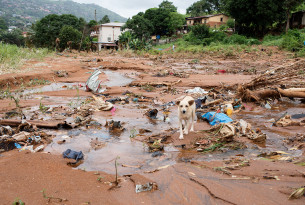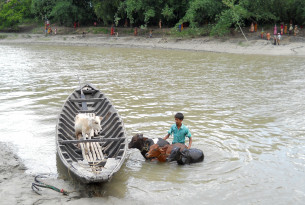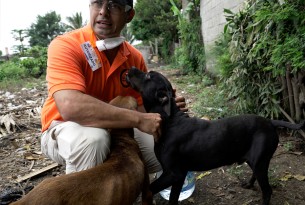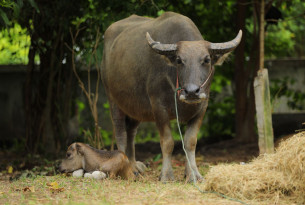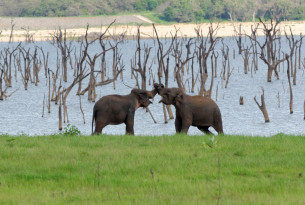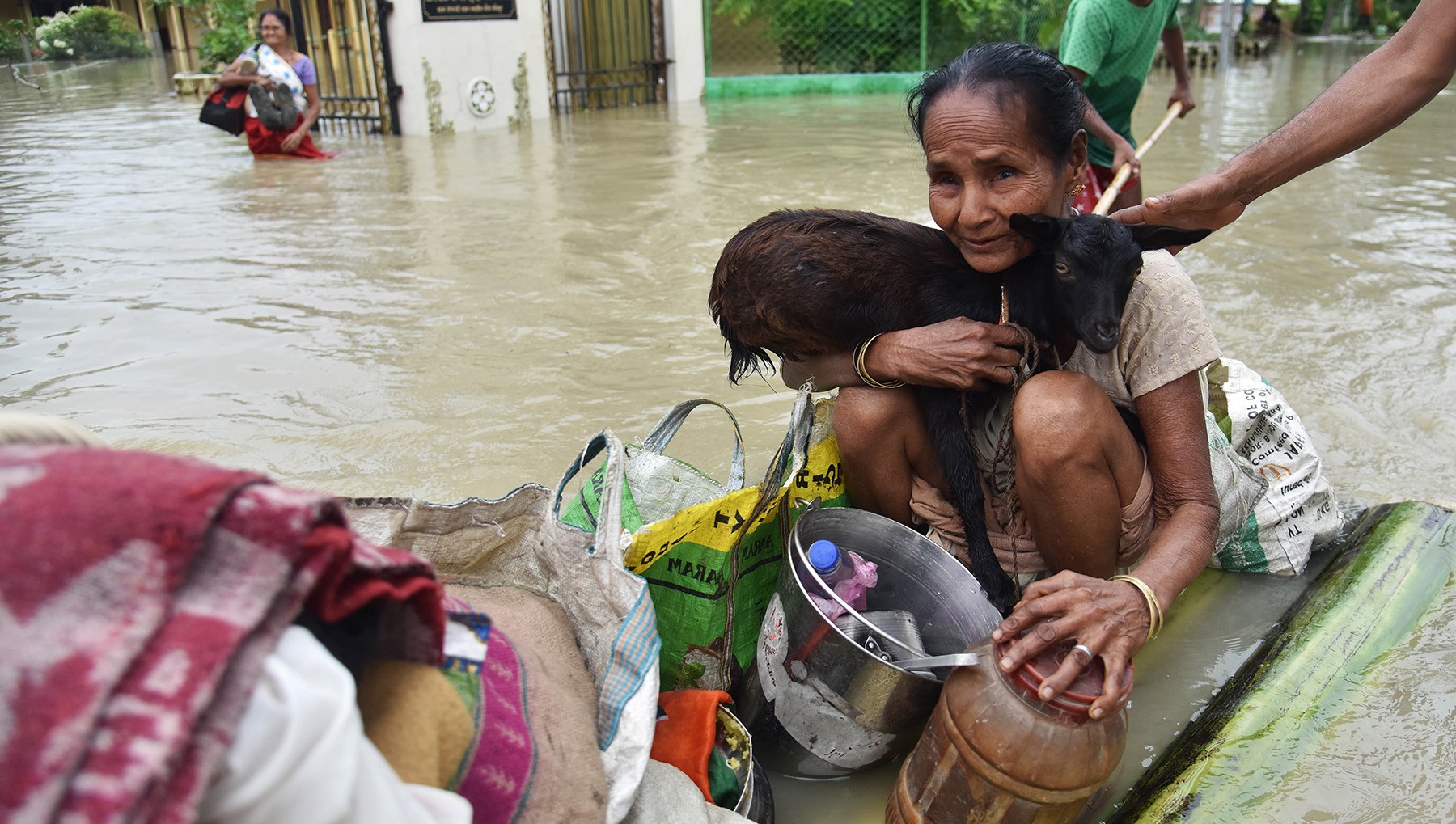
We're on the ground helping animals after floods in India and Nepal
Our disaster response team races in to save animals, helping people rebuild their lives
Thousands of animals are fighting for their lives in India’s northeastern state of Assam and in Nepal following the devastating floods that have ravaged through cities, towns and the countryside.
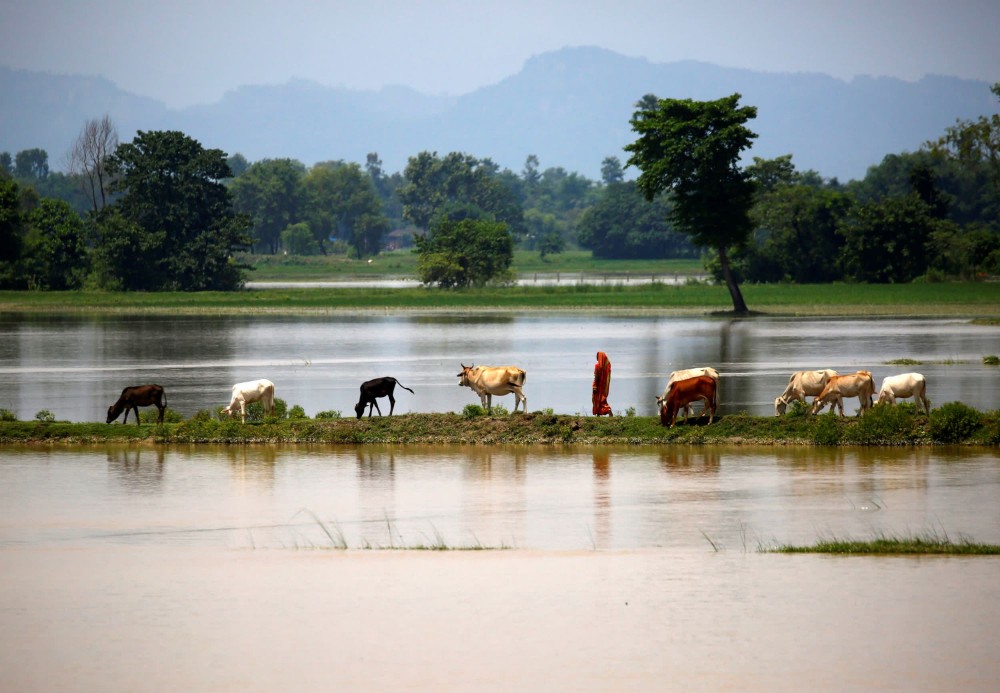
Cattle graze as a woman walks on the higher ground along the flood affected area in Saptari District, Nepal August 14, 2017. REUTERS/Navesh Chitrakar.
We're on the ground, organizing mobile veterinary response teams and distributing emergency veterinary kits and food for both livestock and pets – providing lifesaving care for these vulnerable animals whose owners rely on them to keep their families out of extreme poverty.
Many of the animals that we are treating are deeply traumatized and in shock. A large number have broken limbs and are in extreme pain.
So far, local relief efforts have been focused on the humanitarian crisis. We are now in the disaster zones, providing much needed food and medical treatment for the animals.
“Animals are in dire need, injured, starving and at high risk of disease. The floods have damaged pastures for months to come, compounding the emergency with starvation,” said Hansen Thambi Prem, our disaster response project manager.
“By helping animals, we not only alleviate their suffering, but also help the people who rely so heavily on them for their livelihoods, transport and food. Governments and NGOs must recognize that when a disaster hits, people and animals' very survival, and eventual recovery, is intertwined. That is why we are on the ground to protect animals.”
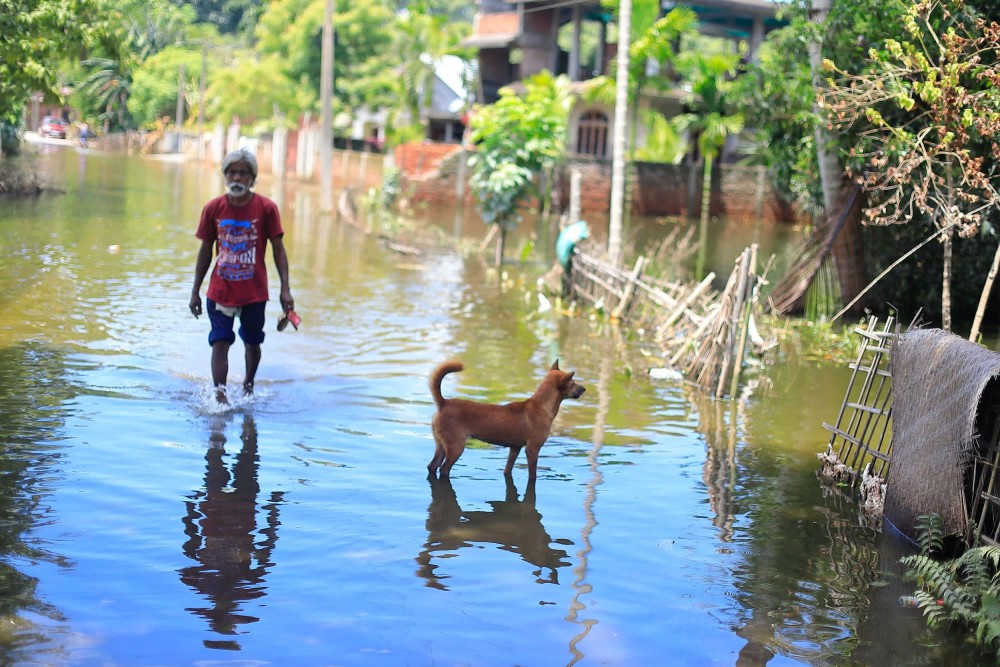
A flooded street in Guwahati, Assam, India. World Animal Protection/Subhash Sharma.
Our teams in India and Nepal will:
- Provide immediate assistance to animals on the ground injured from the floods and meeting basic needs for survival.
- Provide emergency veterinary kit items which will include dressings and treatment for wounded animals, treatment of diarrhea, pneumonia and other potential post-flood diseases.
- Assess the wider and longer-term needs for the animals in partnership with the government.
While global disaster response prioritizes people’s immediate needs, the long-term recovery from disasters is directly linked with the well-being of animals.
Communities and people affected by the floods in both India and Nepal rely heavily on agriculture to make ends meet. In this critical stage, the recovery from the floods by saving animals will provide stability for their future.
Update from our disaster response manager Steven Clegg who is currently in Nepal:
“Today was intense working in areas of unimaginable poverty and loss. At times we were overwhelmed by community members wanting to share their stories of loss and terror from the floods.”
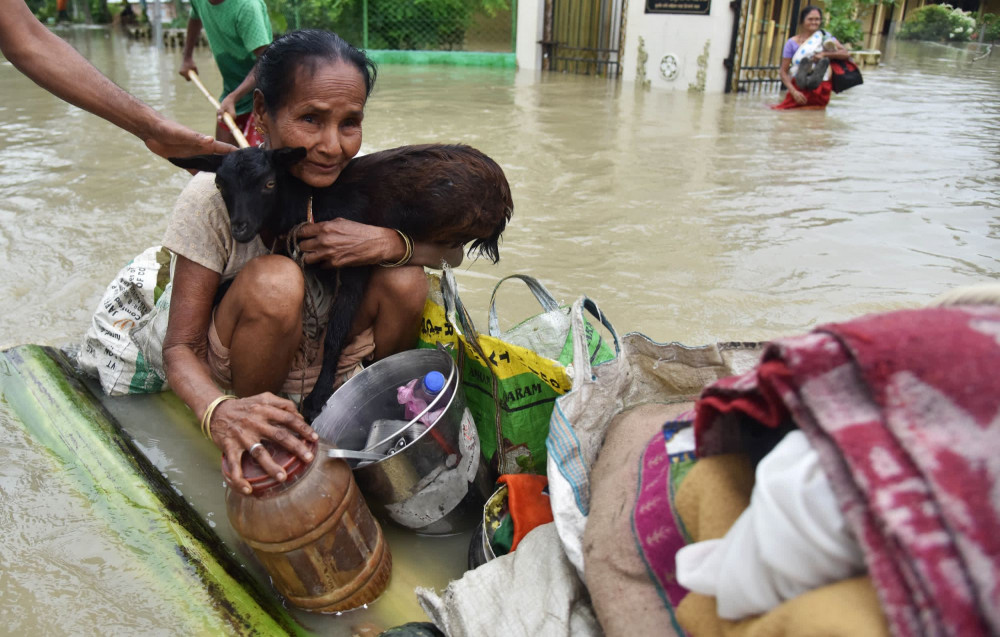
An Indian woman holds a goat while sitting on a raft at the flood affected Koliabor village, some 186km from Guwahati the capital city of India’s northeastern state of Assam on August 13th, 2017. AFP/Biju Boro.


